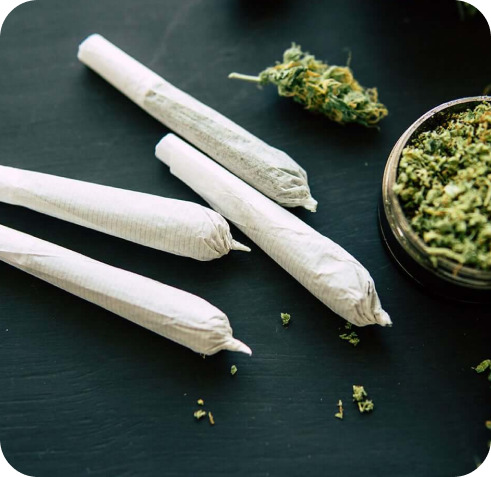Cannabis Consumption Trends
Data demonstrates a steady and remarkable expansion in the user base over the years. In 2016, there were 2.02 million medical cannabis users, and this figure has witnessed substantial year-over-year growth. In 2023, the user base reached 7.91 million, and by 2028, it’s projected to grow to 13.05 million [5].
Marijuana Users In The US (in million)
;
Moreover, the penetration rate has consistently increased over the years. In 2016, the penetration rate was a modest 0.62%, and this metric has displayed a consistent upward trajectory. By 2023, it reached 2.33%, and by 2028, it’s estimated to reach 3.74% [5]. These trends reflect the ongoing expansion of medical cannabis usage and its increasing acceptance as a therapeutic option.
Marijuana Penetration Rate in the US
;
A substantial 72% of Americans [3] expressed the view that regular alcohol consumption poses a greater health risk compared to the habitual use of marijuana. Furthermore, 76% believed marijuana is less harmful than tobacco, and 67% considered it less harmful than prescription painkillers. Still, the first place for the most commonly used substance is alcohol, but marijuana follows second.
Substance Consumption Among Americans
;
Cannabis use patterns and effects
People use cannabis for a variety of reasons, often driven by the prevalence of specific health conditions within a surveyed population. According to our data, “Trouble Sleeping” stands out as the most commonly reported condition at 65%, followed closely by “Chronic Pain” at 50% [1].
Percentage of People Choosing Marijuana for Various Medical Conditions
;
Desired Effects of Marijuana Use
;
Of those who consume cannabis, 23.56% engage in daily heavy cannabis use, while 50.33% report daily light use, highlighting a significant number of daily users. Weekly usage, occurring either 4-6 times or 2-3 times, is observed in 20,73% of respondents,, indicating the prevalence of regular consumption [1].
Frequency of Cannabis Usage
This comprehensive data on cannabis use frequency is further enriched by insights into respondents’ self-reported changes in their need for cannabis consumption. Most people, 63.45%, report that their need for cannabis has remained relatively stable. This shows that they tend to use cannabis consistently.
However, it’s worth noting that 18.11% of respondents say their need for cannabis has slightly
increased, while 5.40% report a more significant increase [1].
Amount of Cannabis Consumption
When asked if their cannabis tolerance has increased, 49% responded "Yes," indicating that their cannabis tolerance has gone up, and 51% responded "No" to signify that their tolerance has not increased [1].
As per their preferred cannabis consumption methods, vaping is most favored (32.09%), followed by smoking (joints/blunts) (21.41%) and eating edibles (20.28%) [1].
Preferred Method of Cannabis Consumption
Notably, 55.45% reported not tracking their cannabis usage, indicating a lack of detailed record-keeping or monitoring. On the other hand, 25.62% track their usage by gram/strain, and another 11.26% track by price value [1].
Cannabis Tracking Method
Not everyone’s experience with cannabis is pleasant. Some people can experience side effects after consuming it. The most commonly reported side effect is “Dry Mouth,” followed by “Dizziness.” However, it is worth noting that many people don’t experience any of the mentioned side effects, indicating that the effects of cannabis can vary from person to person [1].
Cannabis Side Effects
The effectiveness of medical cannabis as a treatment option appears to vary considerably among respondents, as reflected in the data. The majority, 42.97%, have rated its effectiveness at the highest level, suggesting a substantial positive impact on their treatment [1]. In contrast, 0.42% rated it at the lowest effectiveness level of 1, indicating a lackof perceived benefit in their case.
This data highlights the individualized nature of medical cannabis treatments, where some find it highly effective, while others may not experience the same degree of relief [1].
Cannabis Effectiveness Rating (1-10)
Marijuana usage in high school
The use of marijuana among high school students is a worrying problem that has received significant attention in recent years. While some argue that it has become more prevalent due to changing attitudes and legalization efforts in some places, others hold a different opinion.
Let’s go through the numbers and find out.
Marijuana usage in high school by age
The 2021 High School Youth Risk Behavior Survey found that students who tried marijuana for the first time before age 13 stood at 4.9%, with a slightly lower percentage among females (4.7%) compared to males (4.8%) [7].
Current marijuana use is relatively high, with 15.8% of students admitting to its use, and here, females (17.8%) surpass males (13.6%). When considering lifetime use, 27.8% of high school students have used marijuana, with females (30.9%) again indicating a higher usage percentage than males (24.8%) [7].
Marijuana Usage Before Age 13
|
Total |
Female |
Male |
| Tried marijuana for the first time before age 13 years |
4.9% |
4.7% |
4.8% |
| Ever used synthetic marijuana |
6.5% |
7.1% |
5.8% |
| Currently used marijuana |
15.8% |
17.8% |
13.6% |
| Ever used marijuana |
27.8% |
30.9% |
24.8% |
Source: Centers for Disease Control and Prevention
Marijuana usage in high school by race
Marijuana use varies by race/ethnicity among high school students in the US. Multi-race students have the highest prevalence of ever using marijuana (35.2%) and currently using it (20.1%).
The AI/AN (American Indian/Alaska Native) group (7.7%) has the highest rates of early initiation, followed by Black students (7.4%). Asian students have the lowest rates of marijuana-related behaviors [7].
Marijuana Usage Among Different Races in High School
Marijuana usage in high school by grade
There is an increasing trend in marijuana use among high school students as grade level progresses. The percentage of students who have ever used marijuana starts at 15.6% in 9th grade and peaks at 39.3% in 12th grade.
Current marijuana use also shows an escalating trend from 9.1% in 9th grade to 22.4% in 12th grade [7].
Marijuana Usage by Grade
|
9th Grade |
10th Grade |
11th Grade |
12th Grade |
| Ever used marijuana |
15.6% |
24% |
33.1% |
39.3% |
| Tried marijuana for the first time before age 13 years |
4.9% |
4.2% |
5% |
4.9% |
| Currently used marijuana |
9.1% |
13.7% |
18.7% |
22.4% |
| Ever used synthetic marijuana |
5% |
6.4% |
6.7% |
7.6% |
Source: Centers for Disease Control and Prevention













